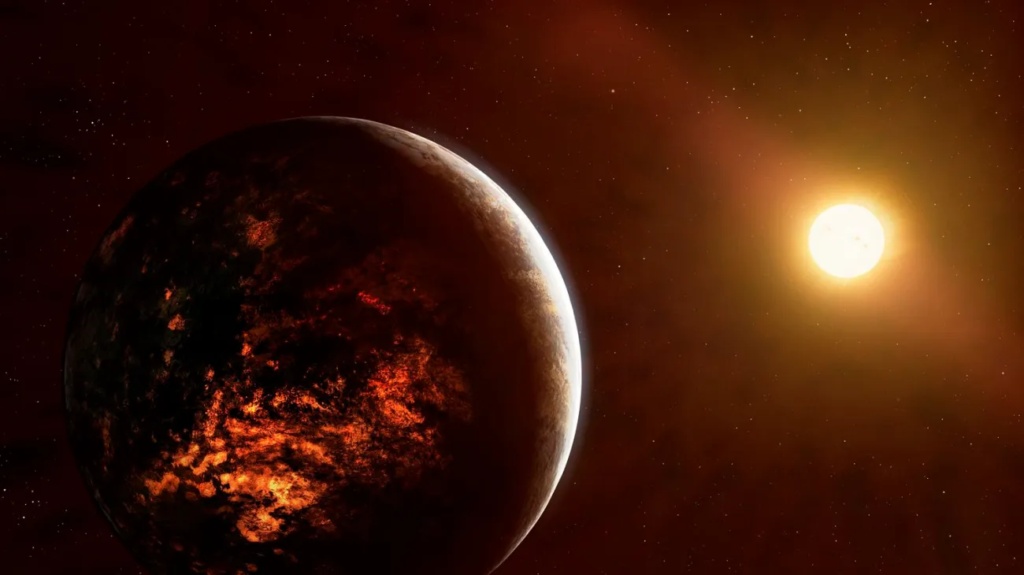
- NASA’s James Webb Space Telescope detects atmospheric gases on the rocky exoplanet 55 Cancri e.
- This discovery marks the first evidence of an atmosphere on a rocky planet outside our solar system.
- Insights from this finding could help understand the early conditions of Earth, Venus, and Mars.
What makes 55 Cancri e so significant in the study of exoplanets?
Astronomers using the James Webb Space Telescope have made a groundbreaking discovery: a rocky planet with an atmosphere outside our solar system. This planet, named 55 Cancri e, is located 41 light-years from Earth and presents the best evidence to date of atmospheric gases surrounding a rocky exoplanet. While 55 Cancri e is far too hot to support life as we know it, the detection of its atmosphere offers a unique opportunity to learn more about planetary evolution.
The planet’s extreme conditions provide valuable insights into the interplay between atmospheres, surfaces, and interiors of rocky planets. Understanding these factors is crucial for comprehending the diversity of planetary systems and the elements that contribute to planetary habitability. Studying 55 Cancri e could shed light on the early atmospheric conditions of Earth, Venus, and Mars, helping scientists piece together the history of our own solar system.
55 Cancri e is an intriguing subject of study despite its harsh environment. Its close proximity to its host star means that its surface is likely covered in molten rock, resembling a perpetually bubbling ocean of magma. This extreme setting offers a unique laboratory for scientists to explore the effects of intense heat and stellar radiation on a planet’s atmosphere and surface.
The exploration of exoplanets like 55 Cancri e expands our understanding of the vast array of worlds beyond our solar system. Each new discovery helps to build a broader picture of planetary formation and evolution, providing context for the countless planets that populate our galaxy.
In summary, the discovery of an atmosphere on 55 Cancri e by NASA scientists using the James Webb Space Telescope is a monumental step in exoplanetary science. This finding not only enhances our knowledge of rocky planets but also brings us closer to understanding the intricate dynamics of planetary atmospheres and their development over time.




































Leave a Reply